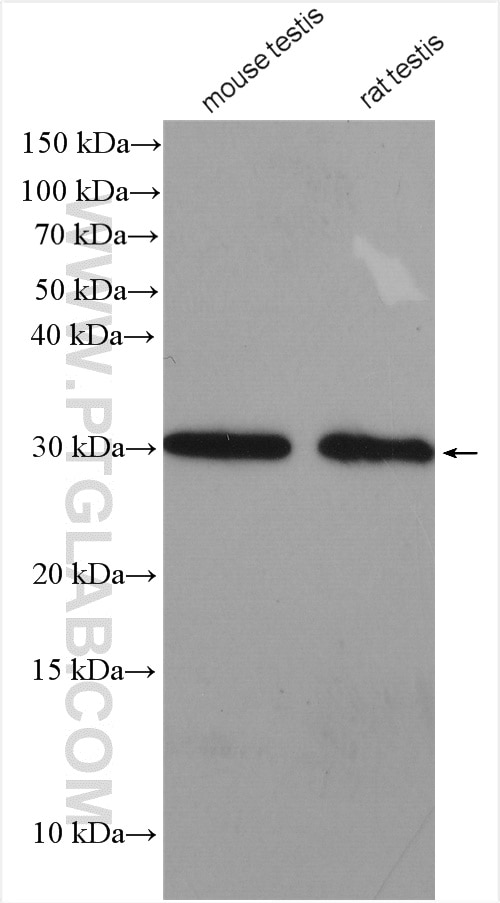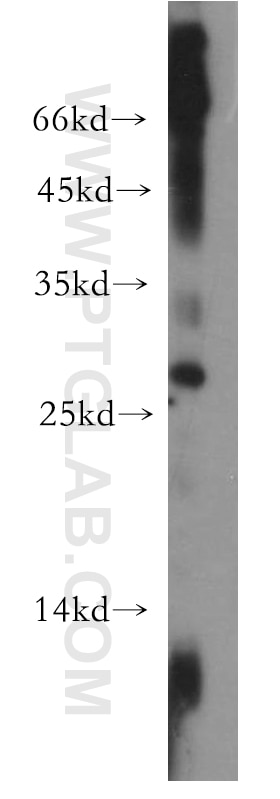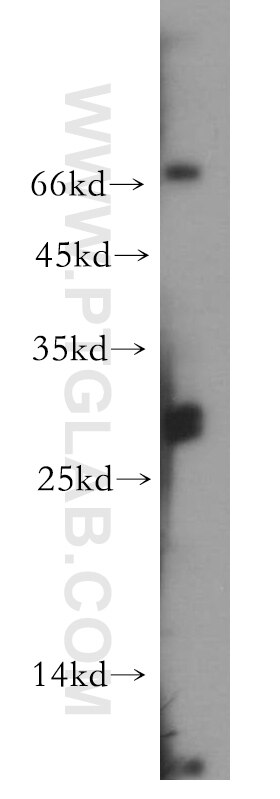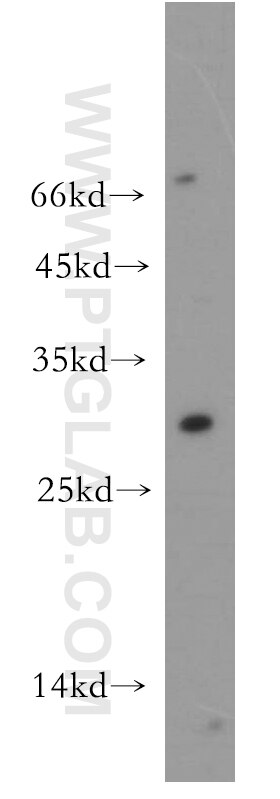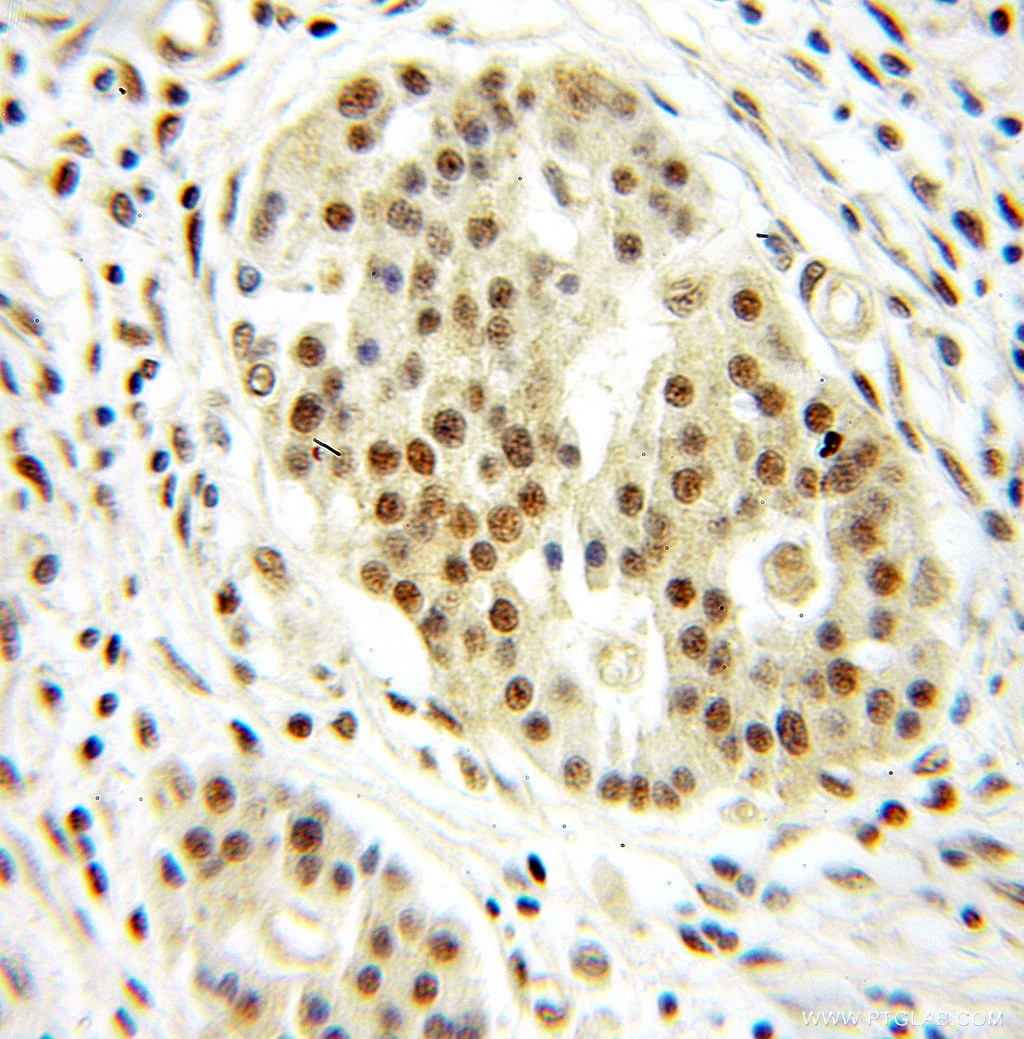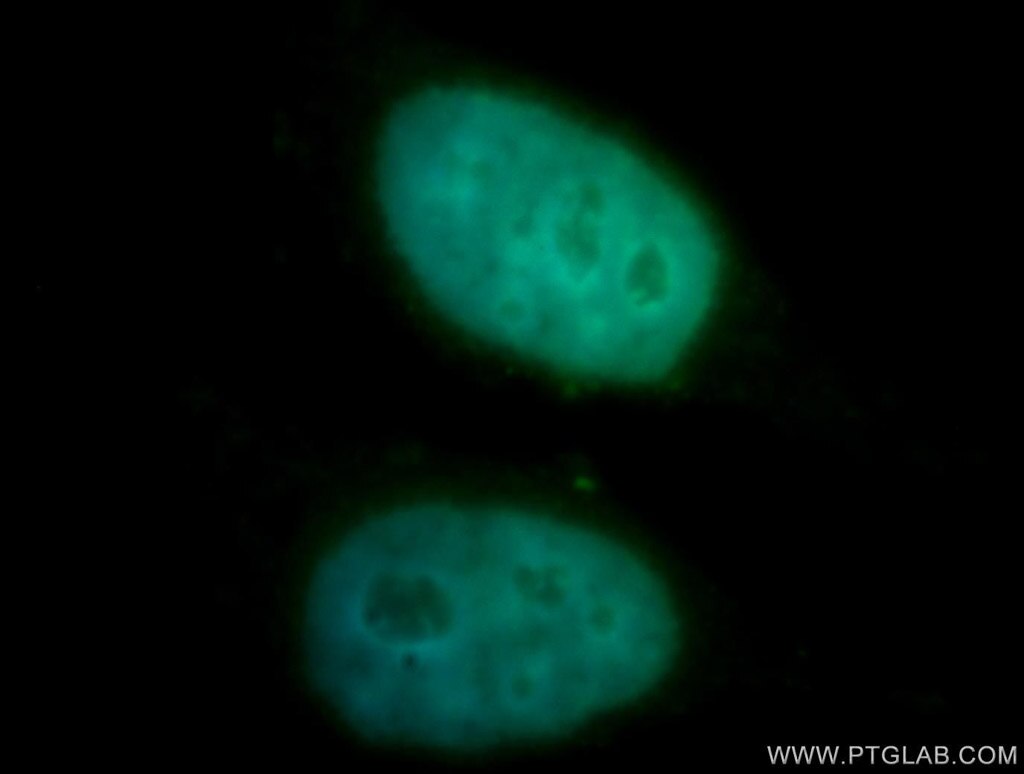Tested Applications
| Positive WB detected in | mouse testis tissue, human heart tissue, human brain tissue, mouse kidney tissue, rat testis tissue |
| Positive IHC detected in | human pancreas cancer tissue Note: suggested antigen retrieval with TE buffer pH 9.0; (*) Alternatively, antigen retrieval may be performed with citrate buffer pH 6.0 |
| Positive IF/ICC detected in | HepG2 cells |
Recommended dilution
| Application | Dilution |
|---|---|
| Western Blot (WB) | WB : 1:500-1:1000 |
| Immunohistochemistry (IHC) | IHC : 1:20-1:200 |
| Immunofluorescence (IF)/ICC | IF/ICC : 1:20-1:200 |
| It is recommended that this reagent should be titrated in each testing system to obtain optimal results. | |
| Sample-dependent, Check data in validation data gallery. | |
Product Information
11020-1-AP targets DRAP1 in WB, IHC, IF/ICC, ELISA applications and shows reactivity with human, mouse, rat samples.
| Tested Reactivity | human, mouse, rat |
| Host / Isotype | Rabbit / IgG |
| Class | Polyclonal |
| Type | Antibody |
| Immunogen | DRAP1 fusion protein Ag1470 Predict reactive species |
| Full Name | DR1-associated protein 1 (negative cofactor 2 alpha) |
| Calculated Molecular Weight | 22 kDa |
| Observed Molecular Weight | 26-30 kDa |
| GenBank Accession Number | BC010025 |
| Gene Symbol | DRAP1 |
| Gene ID (NCBI) | 10589 |
| RRID | AB_2277501 |
| Conjugate | Unconjugated |
| Form | Liquid |
| Purification Method | Antigen affinity purification |
| UNIPROT ID | Q14919 |
| Storage Buffer | PBS with 0.02% sodium azide and 50% glycerol , pH 7.3 |
| Storage Conditions | Store at -20°C. Stable for one year after shipment. Aliquoting is unnecessary for -20oC storage. 20ul sizes contain 0.1% BSA. |
Protocols
| Product Specific Protocols | |
|---|---|
| WB protocol for DRAP1 antibody 11020-1-AP | Download protocol |
| IHC protocol for DRAP1 antibody 11020-1-AP | Download protocol |
| IF protocol for DRAP1 antibody 11020-1-AP | Download protocol |
| Standard Protocols | |
|---|---|
| Click here to view our Standard Protocols |
